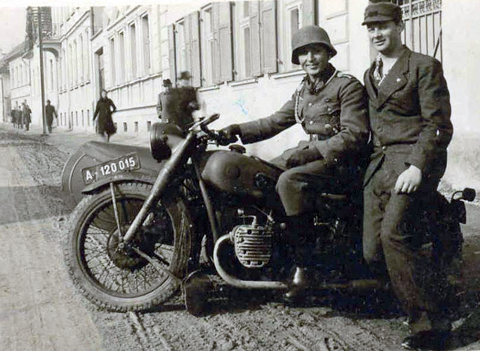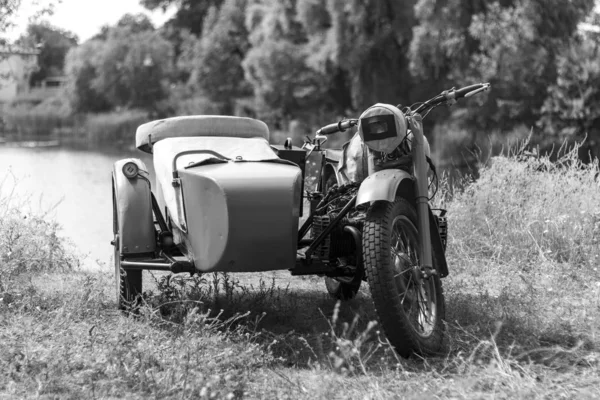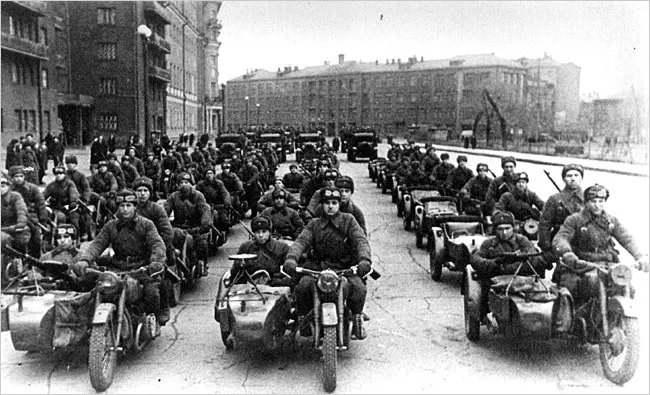
The origins of the IMZ-Ural are linked to developments on the eastern front during World War II. The Soviet Union was preparing for possible military action by Nazi Germany. Joseph Stalin ordered the Soviet military to prepare in all potential areas, including the ground forces defending the Soviet Union against invading German tanks and infantry. Mobility was especially stressed after the Soviet Union witnessed the blitzkrieg’s effect on Poland.

A meeting was held at the Soviet Defense Ministry to devise a motorcycle suitable for the Red Army. After suspending the Winter War with Finland, the Red Army wanted to modernize its equipment. The motorcycles used up to that point were unsatisfactory; their technology was outdated, and the manufacturing quality was inadequate to endure the harsh Russian climate and terrain.
The motorcycle was “modeled after a late-1930s BMW sidecar bike called the R71, which Nazi Germany provided to the Soviet Union after the countries signed the nonaggression Molotov-Ribbentrop pact in 1939.”
According to official accounts, after a lengthy discussion, the BMW R71 motorcycle was found to match the Red Army’s requirements closely. Five units were covertly purchased through Swedish intermediaries. Soviet engineers in Moscow dismantled the five BMWs, reverse-engineered the BMW design in every detail, and made molds and dies to produce engines and gearboxes in Moscow. Early in 1941, the prototypes of the Dnepr M-72 motorcycle were shown to Stalin, who decided to enter mass production. One of the original BMWs purchased through the Swedish intermediaries survives and is displayed in the IMZ-Ural factory museum.

In 1941, BMW began series production of the R75 and ended production of the R71.
The Moscow Motorcycle Plant was established as production escalated, producing hundreds of Russian M-72 sidecar motorcycles. The Nazi Blitzkrieg was so fast and effective that Soviet strategists worried the Moscow factory was within range of German bombers. The decision was made to move the motorcycle plant east, out of bombing range, and into the resource-rich Ural Mountain Region. The site chosen was the town of Irbit, located on the fringe of Siberia in the Ural Mountains. Irbit had been an important trade center in Russia, the location of the second-largest fair in Russia before the Revolution of 1917.

The only available substantial building was a brewery outside of town, beyond the railway line. It was converted into a research and development building to prepare for constructing a massive new facility to build the M-72 motorcycle. On October 25, 1942, the first batch of motorcycles went to the front. 9,799 M-72 motorcycles were delivered during WWII for reconnaissance detachments and mobile troops.
After WWII, the factory was expanded, and in 1950 the 30,000th motorcycle was produced.
Initially, the “URAL” was built for the military only. In the late 1950s, the KMZ plant in Ukraine assumed the task of supplying the military, and the Irbit Motorcycle Works (IMZ) focused on making bikes for domestic consumers. In the late 1950s, the plant’s total production was turned to non-military production. One thousand nine hundred fifty-seven, the M-72 production lines were sold to the People’s Republic of China.
The export history of URALs started in 1953, at first, in developing countries. Between 1973 and 1979, Ural was one of the makes marketed by SATRA in the UK as Cossack motorcycles.


